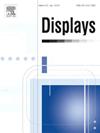层合细胞有限角度工业CT检测的非均匀稀疏扫描角度选择方法
IF 3.7
2区 工程技术
Q1 COMPUTER SCIENCE, HARDWARE & ARCHITECTURE
引用次数: 0
摘要
利用稀疏角度计算机断层扫描(CT)可以快速扫描层合细胞,但传统的均匀稀疏扫描方法不能充分捕捉内部结构差异,导致重建图像中结构缺失。针对这一问题,本文提出了一种用于层合细胞有限角度工业CT检测的非均匀稀疏扫描角度选择方法。首先,对投影数据进行傅里叶变换生成频谱分布图;阈值是通过取频率幅值的平均值来确定的。接下来,计算振幅超过阈值的频率类别的数量,以选择合适的受限角度范围。然后,根据投影域奇异分布曲线确定有限角度范围内的非均匀稀疏扫描角;这种扫描方式既能收集到更多的相关数据,又能避免数据冗余。最后,通过数值模拟和实际扫描实验验证了所提方法的有效性。与最新的扫描角度选择方法相比,我们的方法在保持扫描角度数量不变的情况下,收集了更多的数据,显著提高了图像重建质量。本文章由计算机程序翻译,如有差异,请以英文原文为准。
Non-uniform sparse scanning angle selection method for limited angle industrial CT detection of laminated cells
Laminated cells can be rapidly scanned using sparse angle computed tomography (CT), but the traditional uniform sparse scanning method fails to adequately capture internal structural differences, leading to missing structures in the reconstructed image. To address this issue, we introduce a scanning method—a non-uniform sparse scanning angle selection method for limited angle industrial CT detection of laminated cells. First, the spectrum distribution map is generated by applying Fourier transform to the projection data. A threshold is established by taking the average of frequency amplitudes. Next, the number of frequency categories with amplitudes exceeding the threshold is counted to select a suitable limited angle range. Then, the non-uniform sparse scanning angles within the limited angle range are determined based on the singularity distribution curve in the projection domain. This scanning method ensures that more relevant data is collected while avoiding the data redundancy. Finally, the effectiveness of the proposed method is verified through numerical simulation and actual scanning experiments. In comparison with the latest scanning angle selection methods, our method collects more data and significantly improves image reconstruction quality while maintaining the same number of scanning angles.
求助全文
通过发布文献求助,成功后即可免费获取论文全文。
去求助
来源期刊

Displays
工程技术-工程:电子与电气
CiteScore
4.60
自引率
25.60%
发文量
138
审稿时长
92 days
期刊介绍:
Displays is the international journal covering the research and development of display technology, its effective presentation and perception of information, and applications and systems including display-human interface.
Technical papers on practical developments in Displays technology provide an effective channel to promote greater understanding and cross-fertilization across the diverse disciplines of the Displays community. Original research papers solving ergonomics issues at the display-human interface advance effective presentation of information. Tutorial papers covering fundamentals intended for display technologies and human factor engineers new to the field will also occasionally featured.
 求助内容:
求助内容: 应助结果提醒方式:
应助结果提醒方式:


